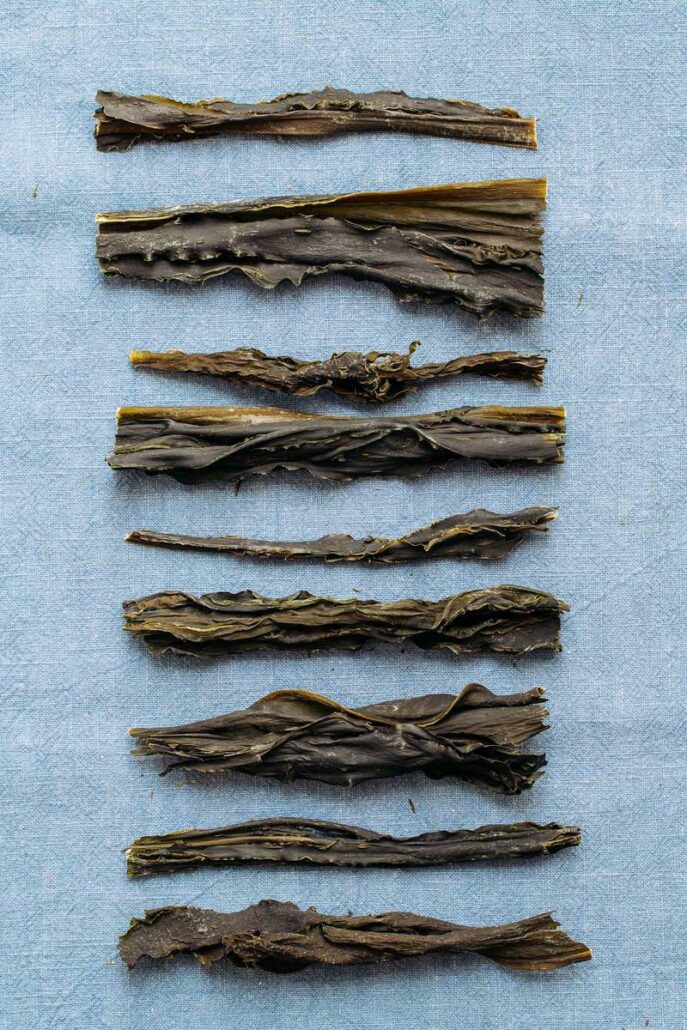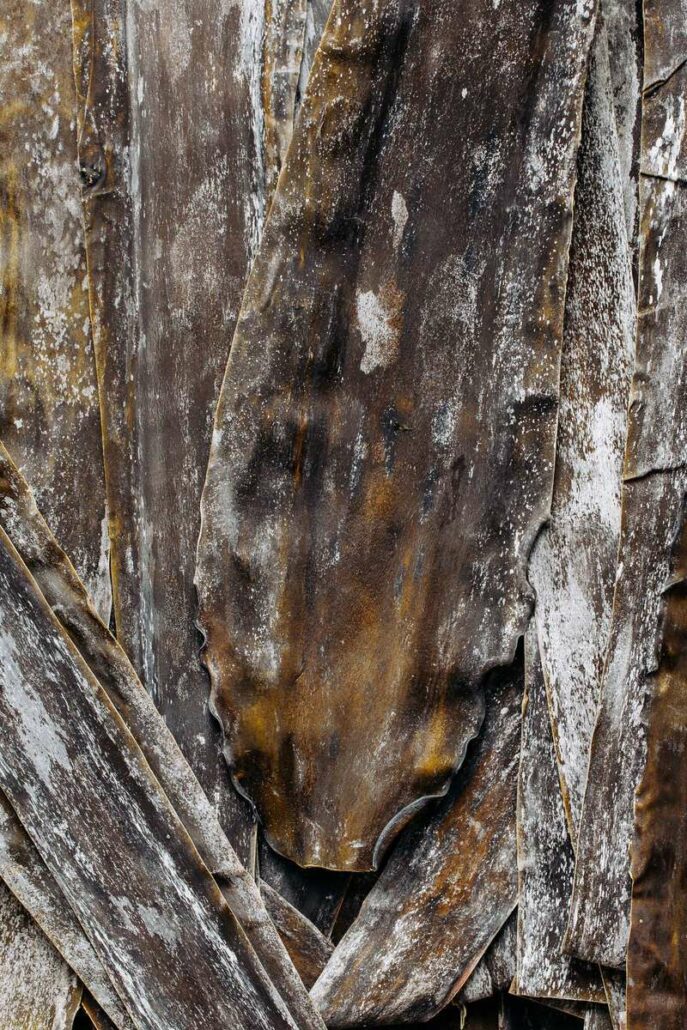Seaweed
Nori, Wakame & Kombu
It is not surprising that the trend for edible seaweed has now arrived in Europe, because it not only tastes great but is also extremely healthy. Even without direct access to the sea, the nutrient suppliers of Asian cuisine are available in Austria in dried form. But not all seaweed is the same, because different dishes require different types. Here you can find out which seaweed you can use for sushi, dashi and co. and everything else you have to know about the superfood.
Vitamin and mineral supplier
Seaweeds are not only relatively low in calories, they can also boast a collection of vitamins and minerals. Zinc, magnesium, calcium, phosphorus and iron are just a few of the valuable minerals that enter our bodies through seaweed. However, the iodine content of seaweeds is particularly striking when you take a closer look at the nutritional values. This differs depending on the type of seaweed, but Kombu seaweed, for example, has a value of 100 – 500mg per 100g. This property speaks for an increased consumption of seaweed, especially in an iodine deficient areas such as Austria. Especially in vegan or vegetarian diets, it is a good idea to include marine plants in the diet, because in addition to vital minerals, they also provide high-quality omega-3 fatty acids and a variety of vitamins, such as vitamin B12, which is found in animal products. B12 is mainly found in varieties such as spirulina and chlorella, which are usually available in capsule and powder form.
Due to their positive properties and their large occurrence, seaweed, like insects, is often referred to as the food of the future. While approximately 30,000 varieties of algae have currently been studied and researched in detail, the actual diversity of species is estimated to be many times greater. However, they are not only relevant in the food industry. They are also gaining importance as bio-fuel and are seen as a great hope for the future, which is why many energy companies are investing in algae research. Currently, research is being conducted on biodiesel, biogas or bio-hydrogen with the help of algae, for example, which should later represent a suitable alternative to petroleum and the like.
Nori: The classic for sushi
In Europe, Nori is probably the best-known type of edible seaweed. It owes its popularity to the hype surrounding sushi and the Japanese cuisine. Yet it is not only today that nori seaweed is in vogue. As early as 701 AD, the Taiho Codex listed nori seaweed among the 30 types of sea products that had to be paid to the emperor as an annual tax. From around 800-1200 AD, nori was even reserved for the nobility. In 1717, the cultivation of the seaweed began, as water pollution increased due to the steadily growing population and the natural reservoirs declined.
Today, they are cultivated especially on the Japanese and Korean coasts, but Spain is also considered an important cultivation area for the dark green edible seaweed. The algae used for Nori are red algae, more precisely the genera Porphyra and Pyropia. The form, which is available in our Asian shops, have been pressed, dried and roasted beforehand. They are used in the production of sushi, but also in the preparation of ramen or to garnish noodles, rice and salads.
Wakame: The superfood for soups and salads
On the coasts of Japan, China and Korea, another representative of popular edible seaweeds can be found. Wakame belongs to the genus of brown algae and can be prepared both raw and cooked. It grows up to one metre high and can even be eaten together with the roots, the so-called Mekabu.
Since the seaweeds are only available in dried form in our country, they have to be prepared before they can be eaten. First, the seaweed is placed in water until its volume has multiplied. Then you simply squeeze them out with your hands. If you want to use the seaweed in salad, you can simply let it steep in hot water for 10 minutes. For further processing, it is a good idea to incorporate the seaweed into dishes such as soup or salad. For example, it is an important ingredient in Japanese miso soup. As a salad, Wakame can be eaten with a fresh dressing of lime juice, ginger, garlic, coriander leaves, sesame seeds and vinegar. In combination with cucumber and leaf lettuce, wakame adds the finishing touch to the dish.
Kombu: The iodine supplier from the North
Kombu algae grows on the seabed in wild, cold waters. It usually comes from Hokkaido, the northernmost Japanese island, but the edible seaweed is also successfully cultivated in France and Spain. On the Atlantic coast of northwest Spain, for example, the Kombu algae has been harvested for over 20 years and sold under the organic brand Algamar. The Atlantic coast there is considered one of the cleanest coasts in Galicia.
In Germany, Kombu is not allowed to be sold as food because of its very high iodine content. The reason given is concern about its effect on the thyroid gland. There, the superfood is usually declared as a bath essence, because it is also excellently suited for this purpose thanks to its disinfecting effect. Even the cosmetics and pharmaceutical industry has been working with the special active ingredients of the seaweed for some time. To enjoy your Kombu bath at home, simply soak 30 g of the seaweed in hot bath water for about three minutes and then relax in the tub for 15-20 minutes.
In the kitchen, the Kombu algae is largely used for seasoning dishes thanks to its intense aroma. In the Japanese cuisine, for example, it is indispensable alongside bonito flakes for the preparation of dashi. But Kombu is also used in the kitchen in deep-fried or powdered form.
Insider tip: To give your sushi a distinctive flavour, a small piece of kombu can be cooked together with the sushi rice.
Shop
Soy sauce & ponzu
Soy sauce & ponzu
Soy sauce & ponzu












